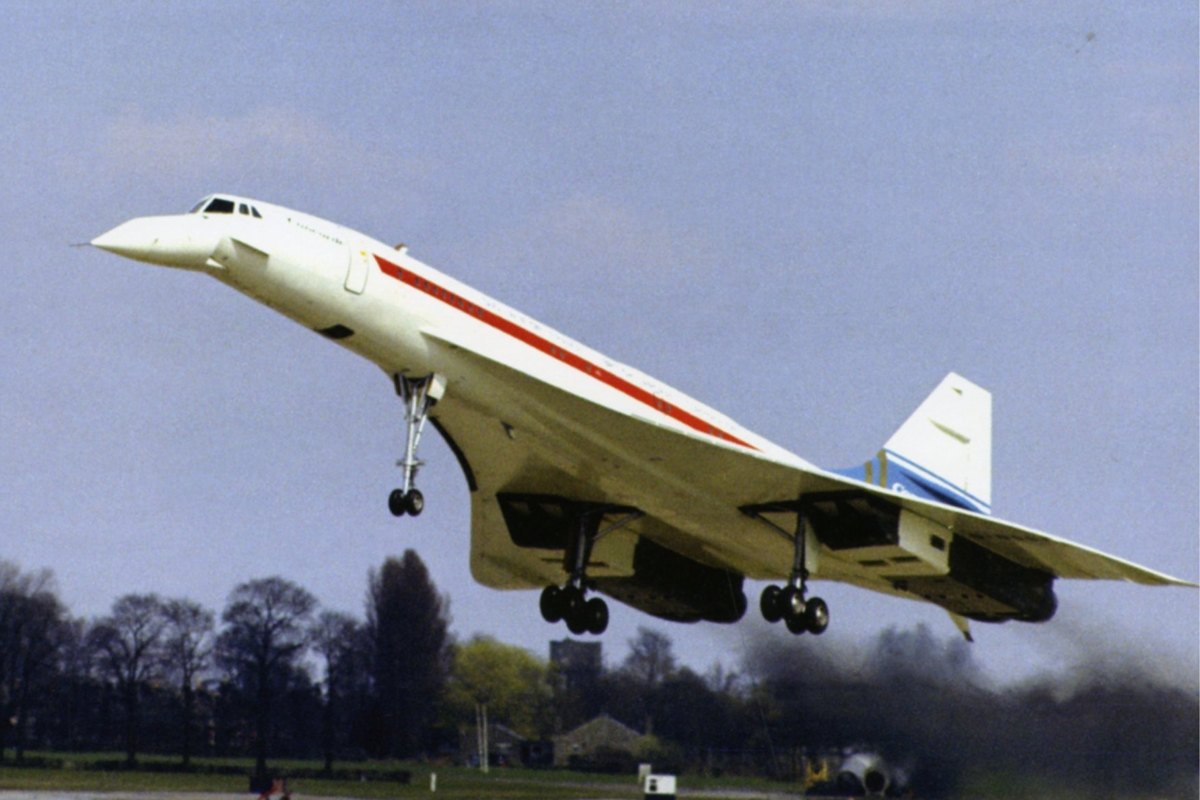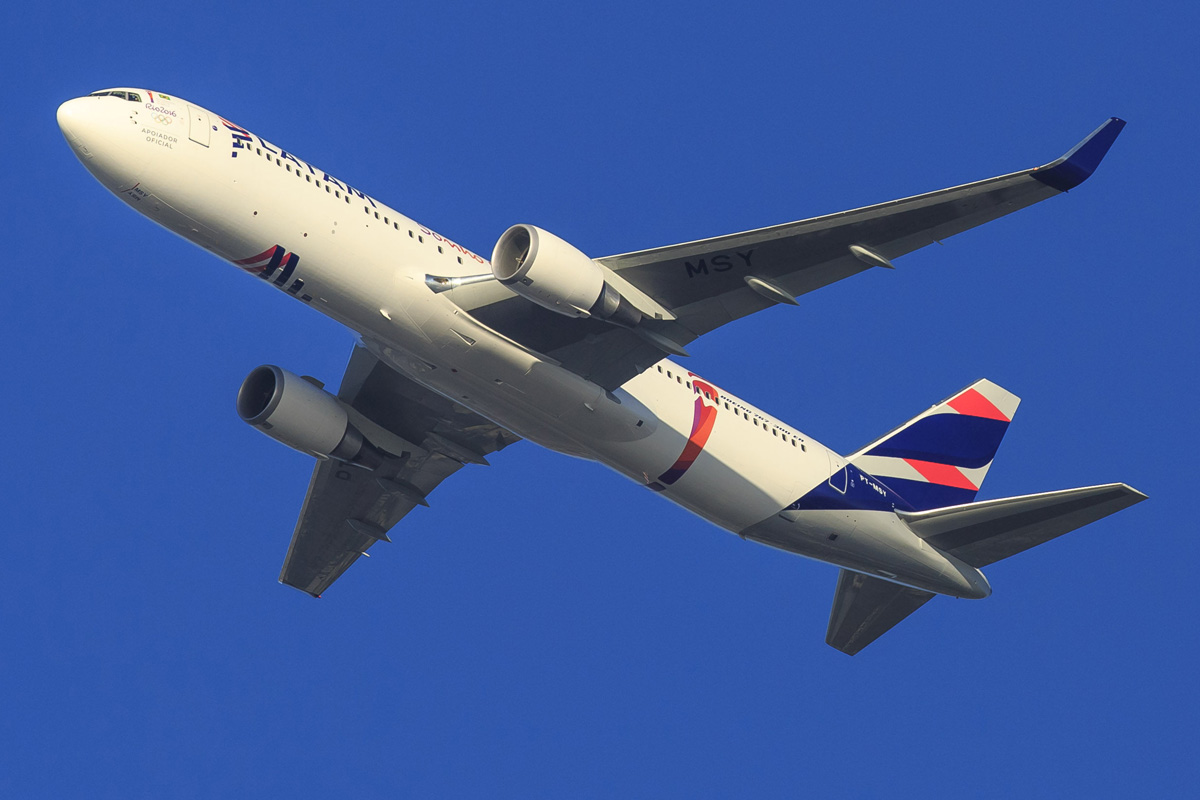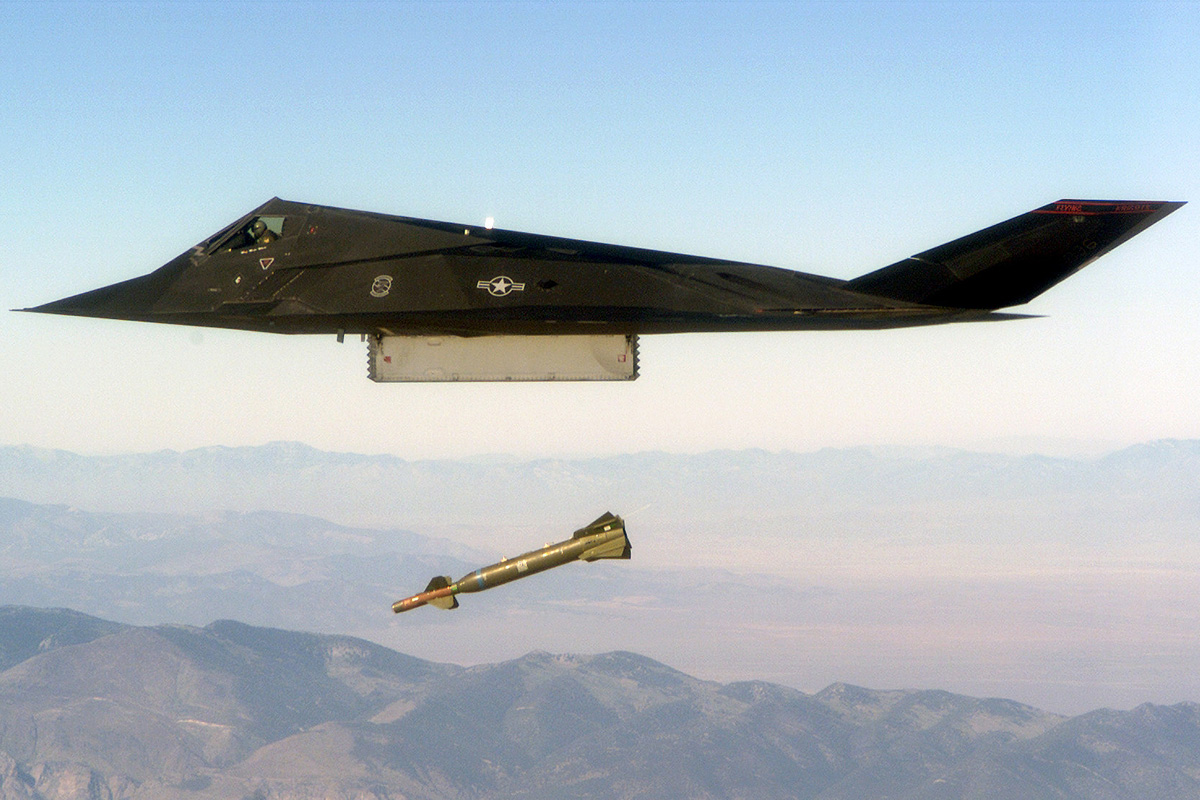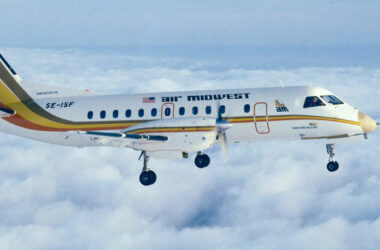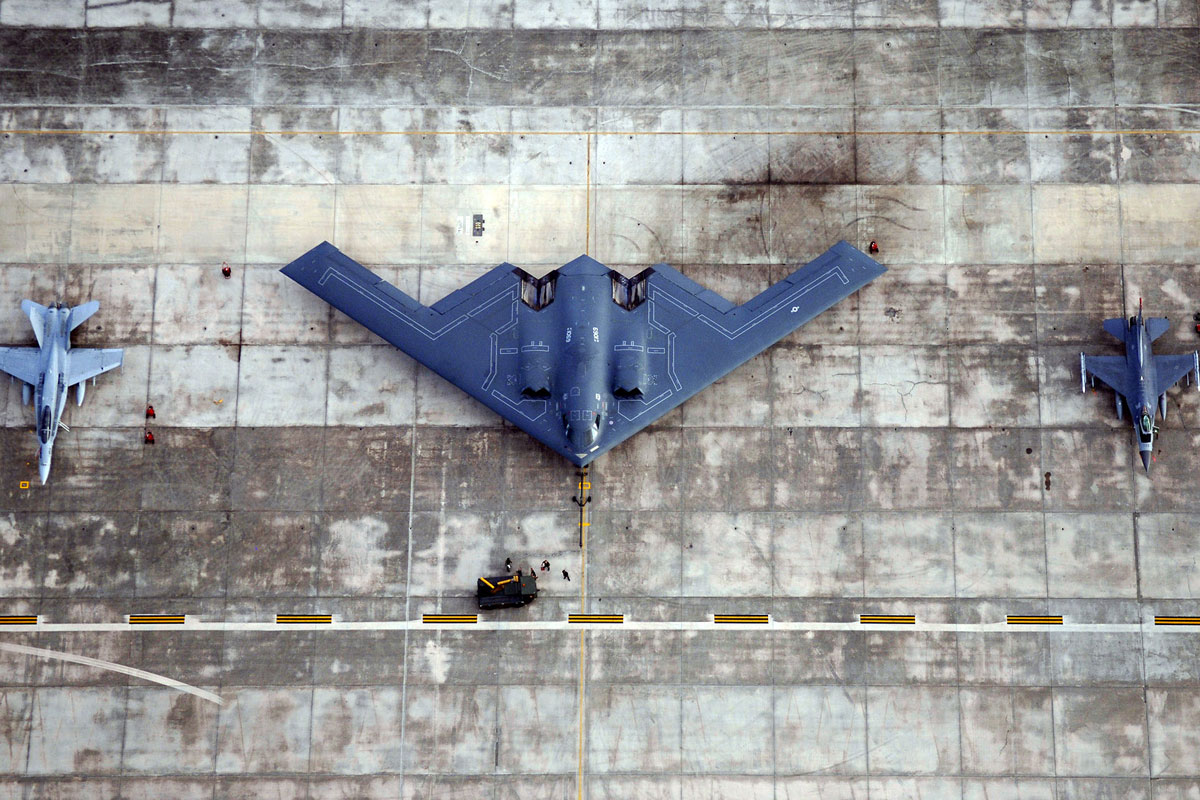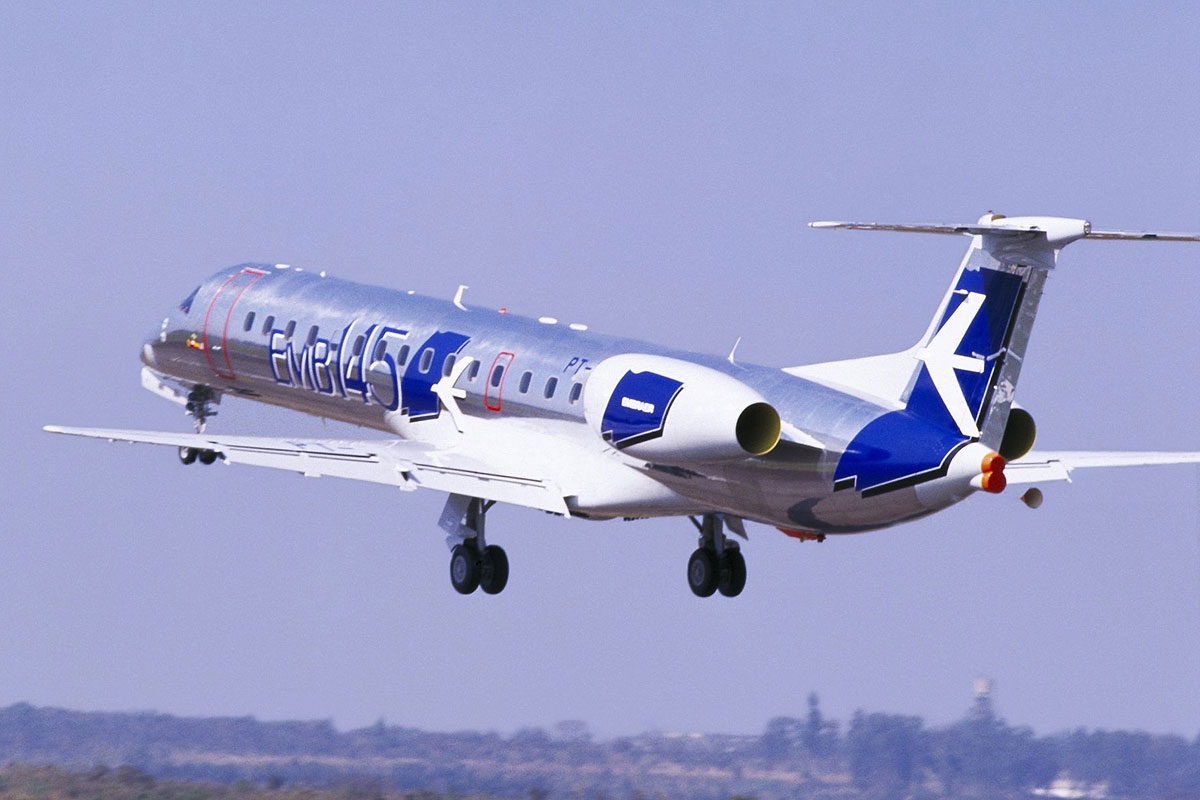The year 1969 was unique in the aerospace industry worldwide. In addition to the first flight of the Boeing 747, the largest commercial aircraft of the time, the man landed on the moon with the Apollo 11 mission. However, it was not only in the United States that the eyes of the world’s population were delighted in front of the TVs.
In Europe, the contribution to aviation began in a new and challenging step, the first flight of an elegant plane with wings in delta that promised to change the history of the air transport. It was a passionate challenge that led mankind to create an aircraft capable of carrying passengers at more than twice the speed of sound.
As beautiful as it was powerful, the Concorde made its first takeoff on March 2, 1969, and became the first supersonic operating commercial aircraft in history in 1976.
Flying in service between 1976 and 2003, the Concorde shortened the time on the transatlantic route by half, surpassing even the clock when landing earlier in New York than the time it had taken off in Europe, after all it was faster than the rotation of the Earth.
The supersonic flight
To make the Concorde take its first flight, huge challenges had to be faced. Even before the commercial jet era, it was already thought of supersonic flights, capable of breaking the sound barrier (1,226 km / h or Mach at sea level).
In 1947, American pilot Chuck Yeager reached 1,357.64 km / h (Mach 1.25) with the Bell X-1 rocket aircraft, breaking that barrier for the first time, which would easily be overcome by combat aircraft in the following decade and opening the possibility commercial aircraft to do the same.
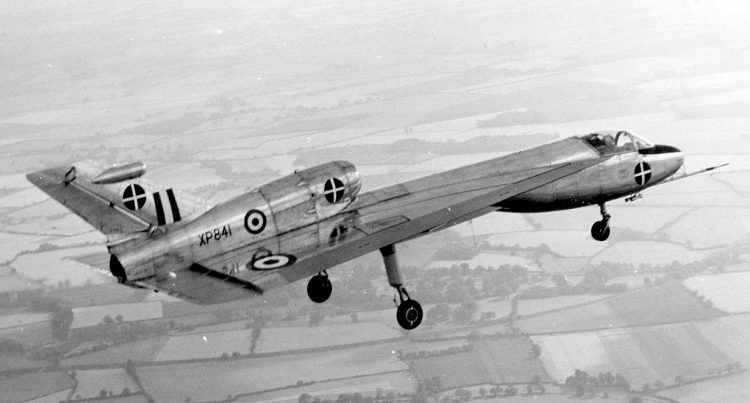
The earliest studies of supersonic passenger transport began in England in the early 1950s and resulted in the Avro 730. The “thin delta” configuration of the wings would create a vortex sufficient to ensure lift and stability at low speed, crucial for take-off and landing, while still achieving high supersonic cruise performance.
The English committee then moved on to the new proposal with the construction of an experimental aircraft, the Handley HP.115. Highly manoeuvrable at low speed, he proved that the theory was right in a supersonic could generate lift at speeds of 111 km / h, for example.
Towards the definitive delta
In response to the government’s call for a supersonic passenger jet project, Hawker Siddeley, Bristol and Armstrong Whitworth developed the HSA 1000, 198 and M-Wing studies, respectively.
Bristol won the dispute and drew the 223 project, an evolution of 198 and so the basic form of the Concorde was born. Only a partnership was needed now and French Sud-Aviation was the chosen one.
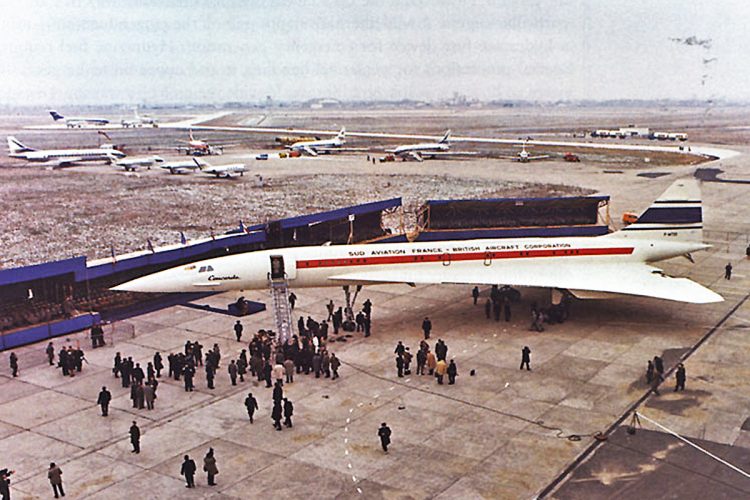
Concorde
The British knew that the French had been searching for their own supersonic passenger plane since the late 1950s. It would be natural to join two forces that had the same goal.
In 1960, Bristol was surprised with Sud Aviaton, as the French had evolved its project in the same way as the English, including solving the issue of lift. However, this was a fraud.
It was later learned that the British committee itself had passed on the BAC project to Sud Aviation. It should be a scandal with espionage charges, industrial rights, but that was not quite the case.
Each side needed the other. The French improved the design, while the British had the necessary engines for the new airplane. The jet would have an aluminum fuselage because there were no composite materials resistant to supersonic friction.
To avoid major challenges, the maximum speed was limited to Mach 2.0 (2,470 km / h), because above that, aluminum would suffer damage with devastating effects for the flight.
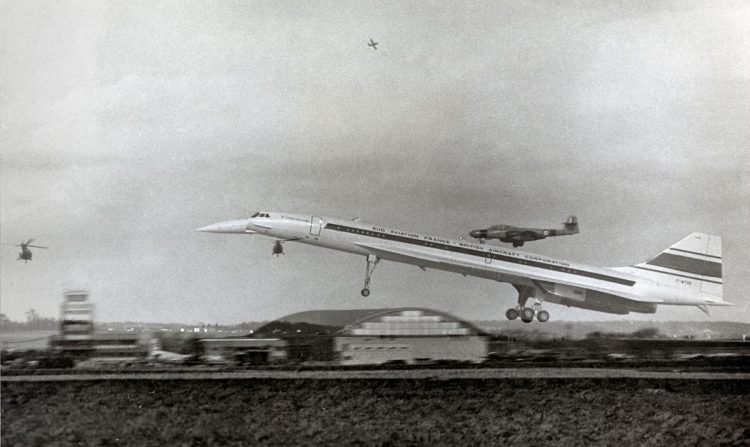
The development of the British bomber TSR2 helped the Concorde by giving rise to the Rolls Royce Olympus engine, with post-combustors. The project would be for an airplane with a capacity of up to 128 seats, but the average would be 100.
In 1967, the two nations agreed to name the plane as Concorde, a symbol of union and harmony between the two countries. The commercial project envisaged a forecast of 350 airplanes flying in 1980.
However optimistic the Concorde program was, it was too expensive for most airlines at the time. Its price rose six times over the next 10 years, reaching £ 23 million per unit at the time.
In addition, the first oil crisis in 1973 shifted commercial aviation to more economical and operationally profitable jets. There was yet another downside to the Concorde. Breaking the sound barrier (twice) over continental regions meant losses due to the sonic boom.
Even so, more than 100 orders were made by several airlines until 1967. However, almost all were canceled in 1973, leaving only orders from BOAC and Air France, then state-owned companies from the two countries that developed the aircraft.

In 1969, the Concorde finally took off for the first time, on a calm and subsonic speed flight, departing and arriving from Toulouse, in the south of France, with the pilot André Turcat as captain. In 1971, it reached the highest altitude of a commercial jet in level flight: 68,000 feet (20,726 m).
US pressure because of noise (and also by not having a national competitor) ended the dream of the Concorde flying within the country. Even with the Mach 2.23 record (2,753 km / h) in 1974, the Concorde did not attract sales.
To make things worse, the Soviets also suffered backfires with the Tupolev-Tu-144, a copy of the Concorde, which flew three months before the European plane. During the 1973 Paris Air Show, one of the prototypes of the Soviet supersonic crashed during its flight presentation at Le Bourget, ruining sales of commercial supersonic jets. Before that, Boeing gave up producing the 2707, an immense supersonic jet that had government incentives to be built.
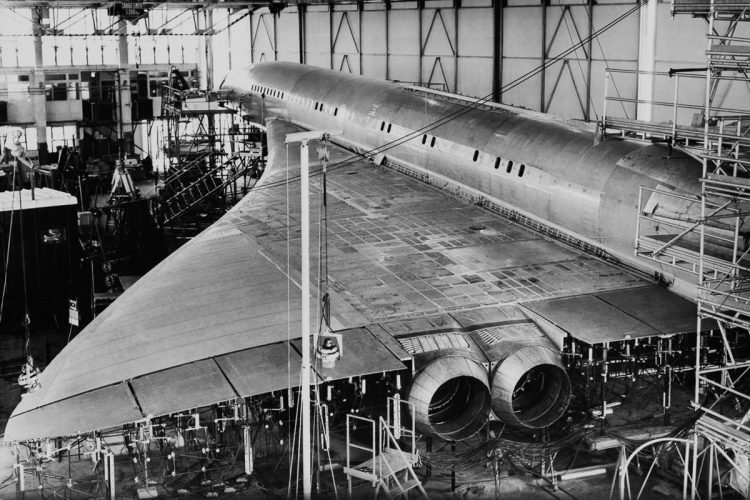
How was the Concorde?
With a slender body, the Concorde was 61.66 m in length and 25.6 m in wingspan and 12.2 m in height. The four RR-Snecma Olympus 593 engines generated 152,200 pounds of power with afterburner and the maximum takeoff weight was 187,000 kg.
On cruising the speed reached was Mach 2.02 (2,494 km / h) at 60,000 feet (18,300 m). The Concorde slipped smoothly on a level above the other commercial planes and was faster than the Earth’s rotation (1,666 km / h).
To get off the ground, the plane needed a 3,600 m runway and a climb rate that reached 25 m / s, almost vertically.
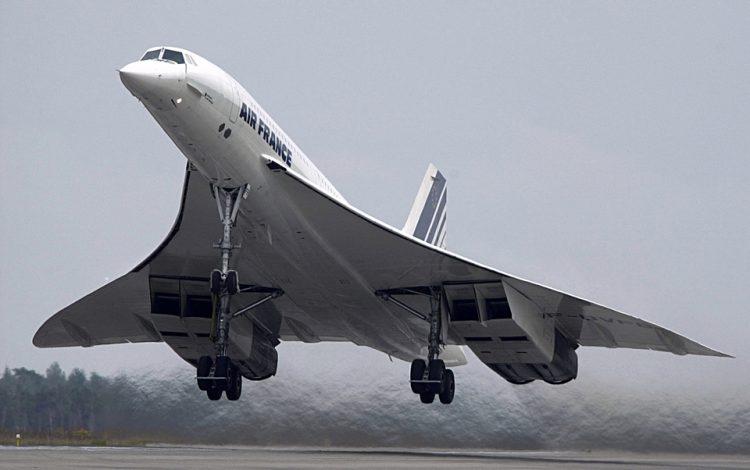
The afterburner was used on takeoff and between Mach 0.95 and Mach 1.70, while the supersonic cruise was done with dry thrust. To achieve this performance the Concorde burned 22,000 liters of kerosene per hour or one ton per passenger between Europe and the United States.
In the cockpit, three crewmembers were monitoring hundreds of analog instruments, but the flight controls were analog fly-by-wire. The autopilot enabled “hands off” of the climb to the descent.
The internal motors could be reversed to reduce the rate of descent. There were no flaps to slow down the landing was performed at 274 km / h.
The cockpit looked like a military aircraft and the flight engineer had a sliding seat because of the number of instruments. The view of the runway (on takeoff and landing) was allowed with a movable nose, also fitted with a second windshield.
It also helped to reduce the speed in the final approach. On land, it was at an angle of 12.5 °, rising at takeoff and landing to 5 °. During the cruise, it was completely straight.
The temperature at such a high speed reached 130 ° C at the tip of the fuselage. The pressure also warmed the rest of the Concorde, especially the passenger cabin, but not its properly cooled and pressurized interior, as well as the white exterior paintwork.
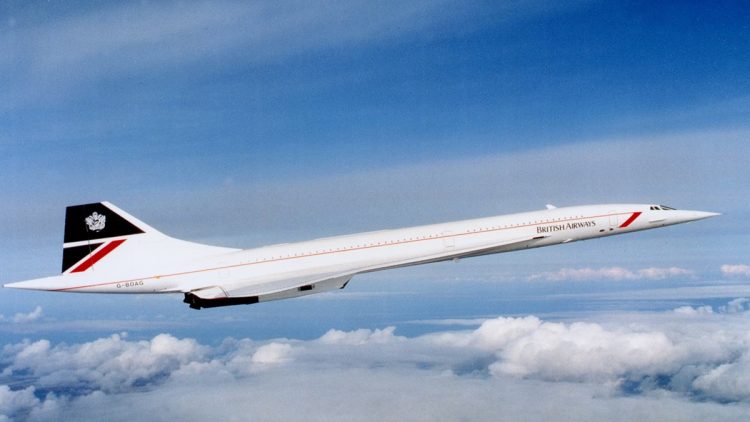
In fact, the pressurization was less than in ordinary airplanes, because there was the fear of decompression too fast for the passengers to put the oxygen masks. Because of this, the windows were smaller, reducing the risk.
The expansion of the fuselage due to the high external temperature caused the cabin to increase in width and was perceptible to the passengers. There was also a digital display with speed and altitude during the flight.
Narrow and tight, the Concorde had first-class on-board service, since the ticket cost much more than on any other flight on the same route, averaging $ 10,000. The menu onboard was of high French gastronomy, including expensive wines and champagnes.
Between Europe and the US, the average flight time in a typical airplane was 8 hours, but the supersonic did in 3.5 hours. There were 100 leather seats and two compartments of 40 and 60 seats for smokers or not, respectively.
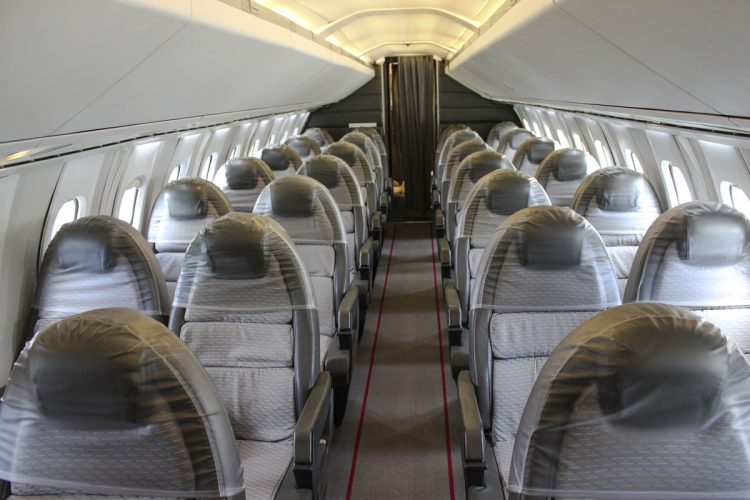
Each armchair was 60 centimeters wide and the space well reduced for the legs, just like luggage, limited in weight.
It was possible to leave London or Paris at lunchtime and have breakfast again, except in New York. One could “go back in time” for an hour and a half, enjoying the dark blue sky of the high atmosphere and the curvature of the planet.
The first commercial flight of the Concorde was on the Paris-Rio de Janeiro route, by Air France, and London-Bahrain by British Airways, both in January 1976.
Even at a technical stopover in Dakar, Senegal, for refueling, the Concorde flew to Brazil in just 6 hours, half the normal time. There was also the so-called “Le Tour du Monde”, a fantastic and expensive trip around the planet with stops in several places, many of them exotic, such as Bali and Papeete.
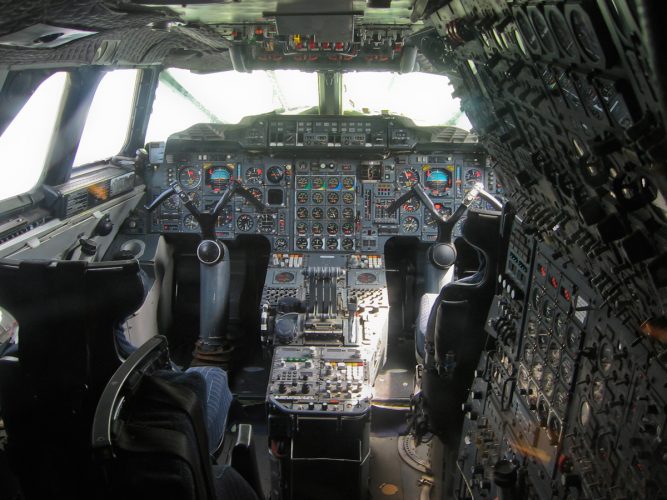
Round trip at Mach 2
To show the speed of the Concorde, Air France did something bold. On December 19, 1985, a Boeing 747 took off from Paris to Boston, USA. At the same time, in the American city, the Concorde took off to the French capital. After landing in Paris, the supersonic stayed on the ground for an hour, and returned to Boston again. Upon landing, the Concorde was 11 minutes ahead of the 747.
Despite its unparalleled performance, the Concorde became economically viable only on routes from Paris and London to New York, where its speed was valued by top executives, celebrities and VIP passengers.
Tragic end
The end of the Concorde was anticipated due to a fatal accident, the only one in its long career of 27 years. Of the 20 aircraft produced, six were tested and 14 entered service, seven for BOAC, which became British Airways, and seven for Air France.
On July 25, 2000, flight AF4590 departed from Charles de Gaulle airport to JFK airport in New York. Still on the runway, a piece that would have come off a Continental Airlines DC-10 hit one of the tires, which blew up and dropped pieces under the left wing.
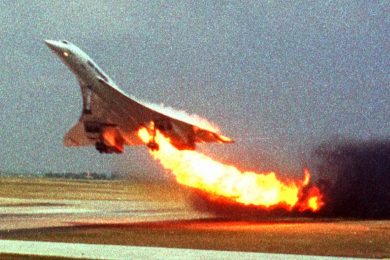
The impact broke the fuel tank and the kerosene came into contact with one of the Olympus in full afterburner, which generated a fire. The crew, in an effort to maintain the climb, turned off the engine number 2, but the 1 lost power due to the ingestion of gases from the burning.
Then, at a high angle, the plane lost lift and crashed over a hotel in Gonesse, killing 100 passengers, nine crewmen and four people on the ground.
Later, the version of such a DC-10 metal strip would have caused the accident was contested, as cases of Concorde tire overflow were not uncommon. Continental and the maintenance company official were convicted in a controversial case.
With changes in the tires and wings, among others, the Concorde flew again in 2001 and remained active until 2003 when the companies put it out of service. The accident in 2000, the September 11 terrorist attacks and the decision of Airbus, now owner of Aérospatiale, of not supplying more parts to the plane, forced its exit.
Billionaire Richard Branson, owner of the Virgin group, tried to buy British’s fleet but was unsuccessful. In 2015, an association wanted to resume Concorde flights, but it was in vain.
Today, it can only be appreciated in a static way, but forever will be remembered for its boldness, elegance and speed.

